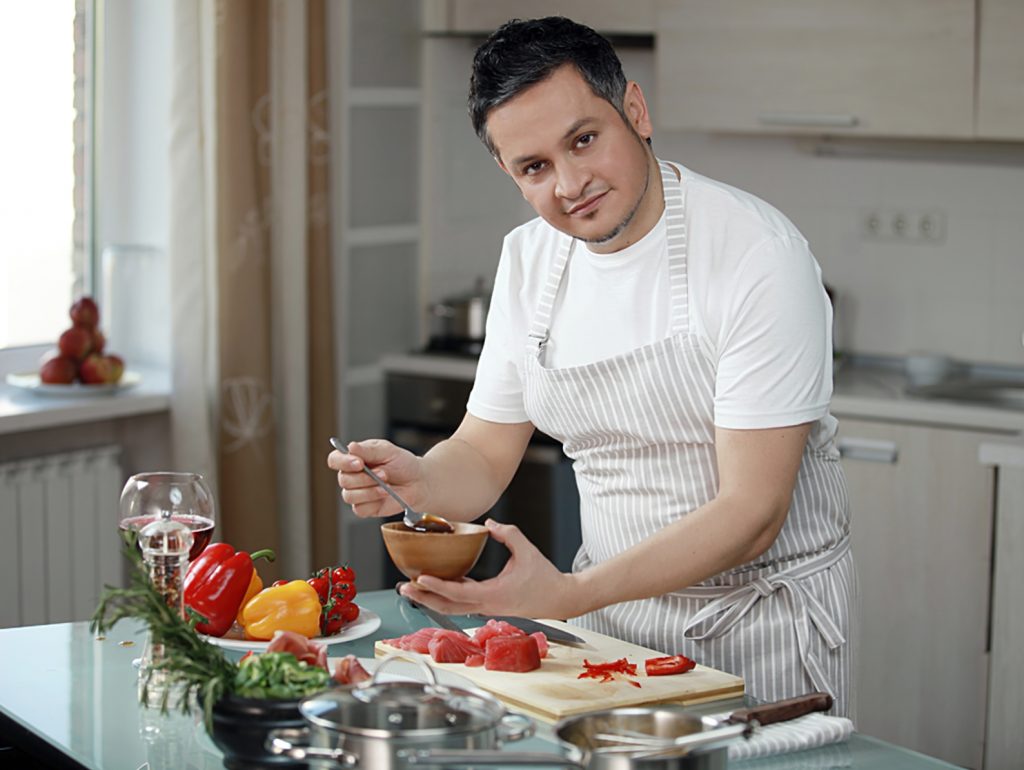Becoming a skilled home chef requires mastering various cooking techniques. Understanding and applying these methods in your everyday cooking will elevate your culinary skills and help you create delicious and satisfying meals. In this comprehensive guide, we’ll explore six fundamental techniques every home cook should know, from sautéing to baking, to enhance your culinary prowess.
-
Content
Sautéing: The Art of Quick Cooking
Sautéing is a high-heat cooking method that quickly cooks ingredients in a small amount of oil or fat. This technique is perfect for cooking tender meats, vegetables, and aromatics, such as onions and garlic. To sauté effectively, heat your pan over medium-high heat and add a small amount of oil. Once the oil is hot, add your ingredients, ensuring they are evenly distributed across the pan’s surface. The key to sautéing is to keep the ingredients moving in the pan, either by shaking the pan or using a spatula, ensuring even cooking and preventing burning. With practice, sautéing can become second nature, making it an essential technique for speedy weeknight meals.
-
Roasting: The Secret to Rich Flavors
Roasting is a dry heat cooking method that uses hot air to cook food, typically in an oven. This technique is ideal for meats, poultry, and vegetables, as it brings out their natural flavors and creates a beautiful, golden-brown crust. To roast effectively, place ingredients on a baking sheet or in a roasting pan and cook at a high temperature, usually between 400°F to 450°F. For even cooking, turn or baste the ingredients periodically during the roasting process. Roasting also helps to concentrate flavors, making it a popular method for preparing vegetables like potatoes, carrots, and Brussels sprouts.
-
Braising: Low and Slow Cooking for Tender Results
Braising is a slow-cooking technique that involves searing food at high heat, then simmering it in liquid at a low temperature for an extended period. This method is excellent for tougher cuts of meat, such as chuck roast or short ribs, as the long cooking time tenderizes the protein and infuses it with rich flavors from the braising liquid. To braise, first sear your meat in a hot pan, then add liquid, such as stock or wine, and cook covered over low heat until the meat is tender and flavorful. Vegetables can also be braised to create delicious, melt-in-your-mouth results.
-
Steaming: A Healthy Way to Cook
Steaming is a gentle cooking technique that uses steam to cook food, preserving nutrients and natural flavors. It’s an excellent method for preparing fish, vegetables, and even dumplings. To steam, place a steamer basket over a pot of simmering water, making sure the water doesn’t touch the bottom of the basket. Arrange your ingredients in the basket, cover, and let the steam cook the food until tender. Steaming is a healthy way to cook, as it requires no added fat and helps retain the food’s nutritional value.
-
Grilling: Achieving Smoky, Charred Flavors
Grilling is a high-heat cooking method that uses direct heat, either from charcoal or gas, to cook food. Grilling imparts a delicious smoky, charred flavor to meats, poultry, vegetables, and even fruits. To grill effectively, preheat your grill to the desired temperature, and lightly oil the grates to prevent sticking. Place your food directly on the grates, and cook until the desired level of doneness is achieved, turning occasionally for even cooking. Grilling is a popular method for summer gatherings, and mastering it can lead to fantastic outdoor feasts.
-
Baking: Creating Delicious Breads, Pastries, and Casseroles
Baking is a versatile cooking method that uses dry, indirect heat to cook food, usually in an oven. Baking is most often associated with desserts, such as cakes, cookies, and pastries, but it’s also a popular method for preparing savory dishes, like casseroles and quiches. To bake effectively, preheat your oven to the recipe’s specified temperature and arrange your ingredients in an appropriately sized baking dish or pan. Bake until the dish is cooked through and achieves the desired texture or doneness. Baking requires patience and attention to detail, but the results can be incredibly rewarding and delicious.
Conclusion
Mastering these six fundamental cooking techniques will not only elevate your home cooking skills but also open up a world of culinary possibilities. By understanding and applying these methods in your kitchen, you’ll be well on your way to becoming a more confident and versatile home chef, capable of creating a variety of delicious and satisfying meals for yourself, your family, and friends. So go ahead, start experimenting, and discover the joy of mastering the art of cooking.

